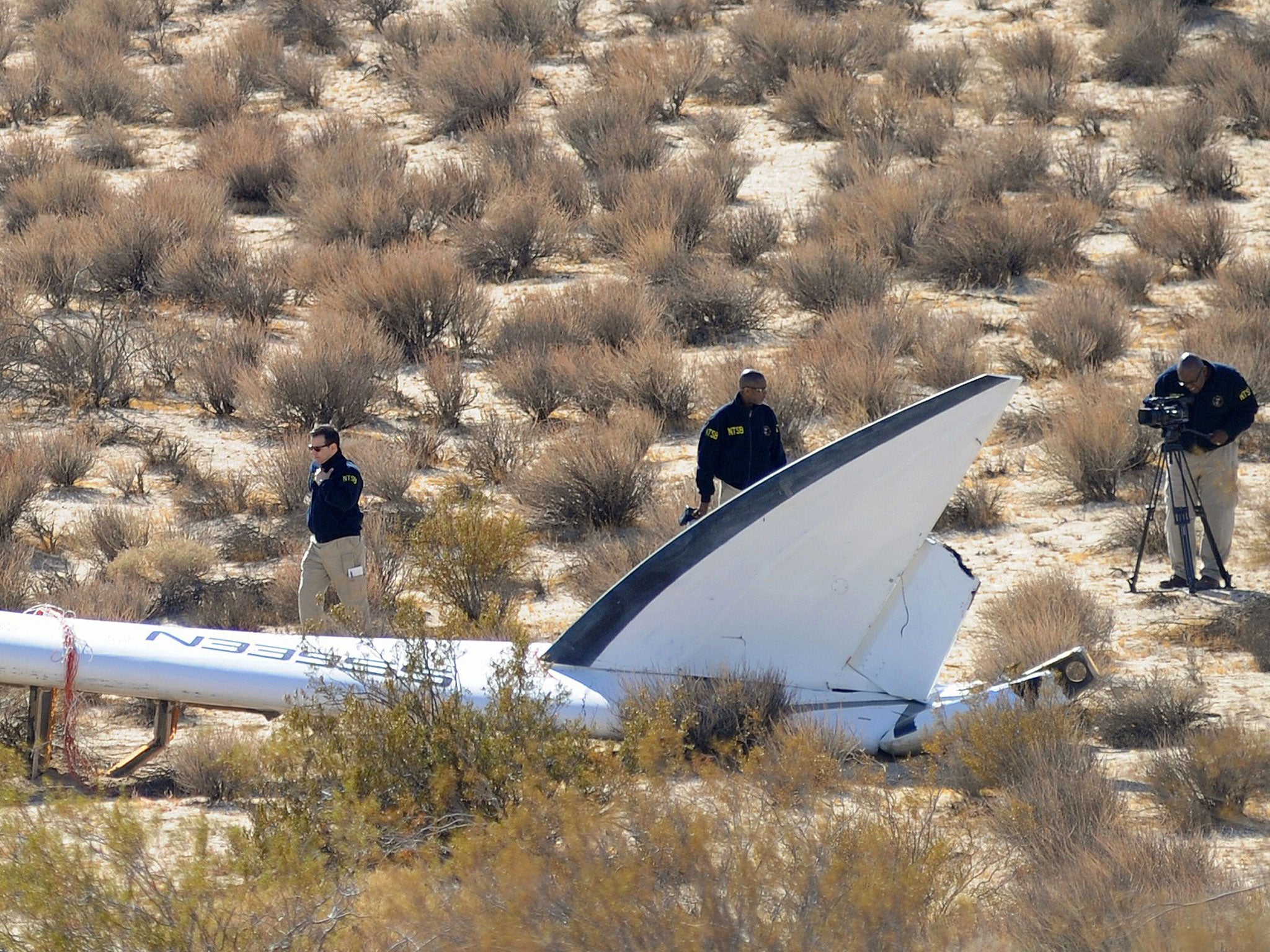Virgin Galactic crash: Can joyriding in space for the super-rich survive?
Break-up over Mojave Desert happened during first test flight of a new plastic-based rocket propellant

Space is a dangerous place. Indeed, trying to enter and exit space are undoubtedly the two most hazardous parts of the cosmic return journey, as the two space shuttle disasters of 1986 and 2003 demonstrated.
Even with the full technological and economic might of the US National Aeronautics and Space Administration (Nasa), bad things can happen when trying to make that return journey above the 100km (62-mile) arbitrary boundary that formally classifies a trip into “space”.
The seven crew members of the Columbia space shuttle died 11 years ago on re-entry into the Earth’s atmosphere after a two-week mission. The fault was a structural failure of the shuttle’s left wing, caused by the impact of a stray piece of insulating foam that came loose during launch.
Seventeen years previously, another seven shuttle astronauts died when the Challenger blew apart 73 seconds after lift-off. The cause was found to be a faulty “O-ring” seal that allowed hot gases to escape from the solid-fuel booster rockets, triggering an explosion in the shuttle’s external fuel tank.
In pictures: Virgin Galactic space rocket crash
Show all 9Last Friday’s failure of Virgin Galactic’s SpaceShipTwo may also turn out to be a problem with the solid rocket fuel. The space ship’s break-up over the Mojave Desert in California happened during the first test flight of a new plastic-based rocket propellant, which was supposed to be the booster fuel to take the ship from its 47,000-feet (nine-mile) altitude to the edge of space.
It could take a year or more for accident investigators to assess what went wrong. Sir Richard Branson has admitted that the findings could deliver a severe if not fatal blow to his ambitions of setting up a commercial space-flight operation for people rich enough to afford the $250,000 (£150,000) ticket.
“If it turns out to be something that was not fixable then obviously it’s very serious, but obviously we’re hopeful it’ll be something that can be fixed,” Sir Richard told the BBC.
“I hope in future people can go into space feeling comfortable, thanks to the brave test pilots who test these spacecraft to make sure that space travel can become something everyday for people in the future,” he said.
But even if Virgin Galactic shrugs off the latest tragedy and resume its test flights, there is still the question of whether commercial space travel will ever be anything other than expensive joyriding for the super-rich.
Virgin Galactic’s passengers will not be travelling from one place to another, as they will land back in the same spot they took off from. They will spend only a few minutes in “space”, at an altitude where the curvature of the Earth and its wispy stratosphere will be outlined by the blackness of space.
And in the process of enjoying the view, they can contemplate how their cash and physical presence have contributed, just a little bit, to the further destruction of what lies below them – the atmosphere of Earth.
Subscribe to Independent Premium to bookmark this article
Want to bookmark your favourite articles and stories to read or reference later? Start your Independent Premium subscription today.

Join our commenting forum
Join thought-provoking conversations, follow other Independent readers and see their replies